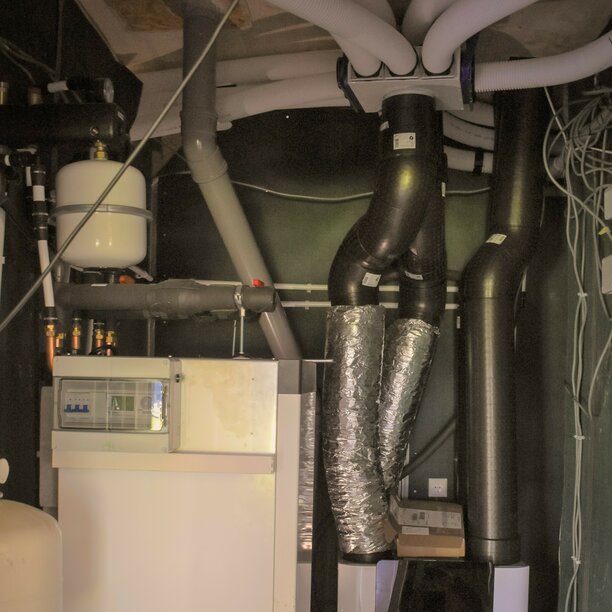In five weeks VIRTUe builds self-sufficient house as part of sustainable lifestyle
Student team built the house RIPPLE that uses a coaching app to encourage residents to live more sustainably.

Student team VIRTUe has practically completed the construction of their self-sufficient and sustainable house in just over five weeks. The house on the campus (on the Koeveld next to the Auditorium) of the TU/e is part of Ripple, the sustainable living concept that playfully encourages people to live and work more sustainably. With this concept, the team hopes to win the international design competition Solar Decathlon Europe in June 2022 in Wuppertal, Germany.
The interior will be finished after the holidays, but the rest of the house, built largely of wood, is in place. The building is completely self-sufficient and has various new and clever features (see frames) that enable the residents to live sustainably. Eighty percent of the materials are or can later be reused. The building consists of a student room, a starter's flat and a communal area, and can be relatively easily placed on top of existing buildings, so that it can also be part of the solution for the housing shortage in urban areas.
SUSTAINABLE LIFESTYLE
But that is not all. The students of TU Eindhoven wanted not only to create a sustainable place to live, but also to offer residents the opportunity to adopt a sustainable lifestyle. "What good is a sustainable house if the residents don't live sustainably," Marianna Angelini of VIRTUe's communications team aptly sums up. "We want to encourage people to live more sustainably."
Coaching app
The encouragement should come from the coaching app RECAPP that is currently being developed by the student team. RECAPP is a social platform that allows residents to earn digital coins, for example by achieving monthly sustainability goals. Think of shorter showers and more sustainable diets. The digital money earned can then be spent in a digital world as we know it from computer games like The Sims.
Angelini: "You can also compare this concept with running apps such as Strava. By constantly achieving new running goals or seeing the lap times of friends and family, you are encouraged to keep improving yourself. We want to encourage people in a playful and positive way to start living more sustainably."
SIXTH PLACE IN DUBAI
The student team has until June 2022 to complete the app, because that is when the Solar Decathlon Europe takes place. VIRTUe will be competing against other student teams for the most efficient and sustainable home. Interested parties can discover the building in the coming months at the campus. The house is also included in the Dutch Design Week and Glow. Afterwards, it will be dismantled and transported to Germany for the design competition.
In Wuppertal, the student team has two weeks to build the house, so the construction has to be completed almost twice as fast as now. Angelini: "That's why it's good that we are practising the assembly now." In 2018, the team also participated in the Solar Decathlon Middle East. In Dubai, VIRTUe finished in sixth place.
What will happen to the house after the international design competition is not yet clear. There is contact with a residential community in Sint-Oedenrode. "They want to set up a kind of eco-village and use Ripple as a starting point," Angelini explains. "It's not definite yet, but it would of course be nice if our house is actually put to use eventually. After all, we're not building it for fun, but to make the world a little better."
Latest news


![[Translate to English:] [Translate to English:]](https://assets.w3.tue.nl/w/fileadmin/_processed_/e/0/csm_BvOF%202019_1031_BHF%20license%20TUe%20ILI%20copy_8a50884392.jpg)


